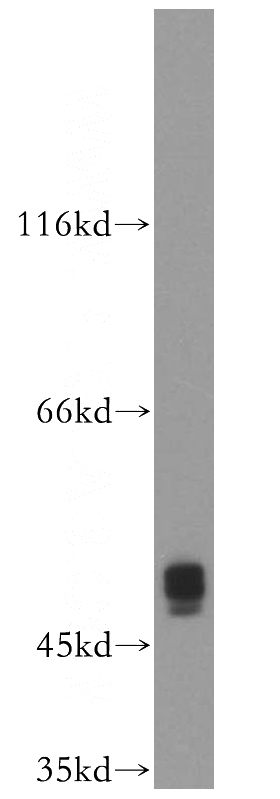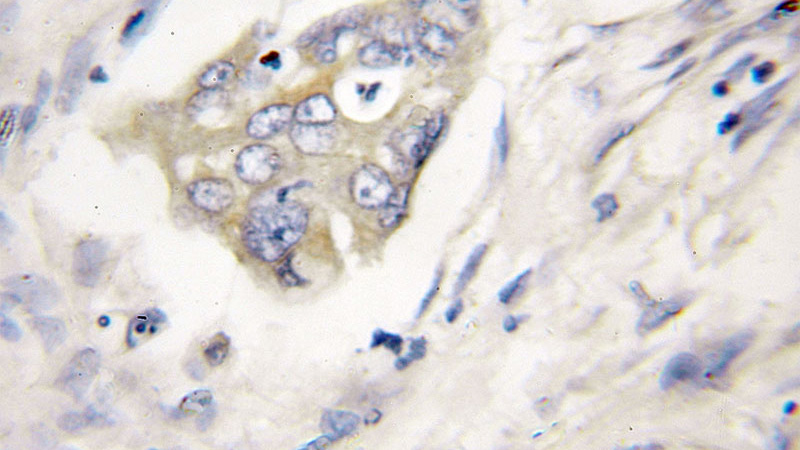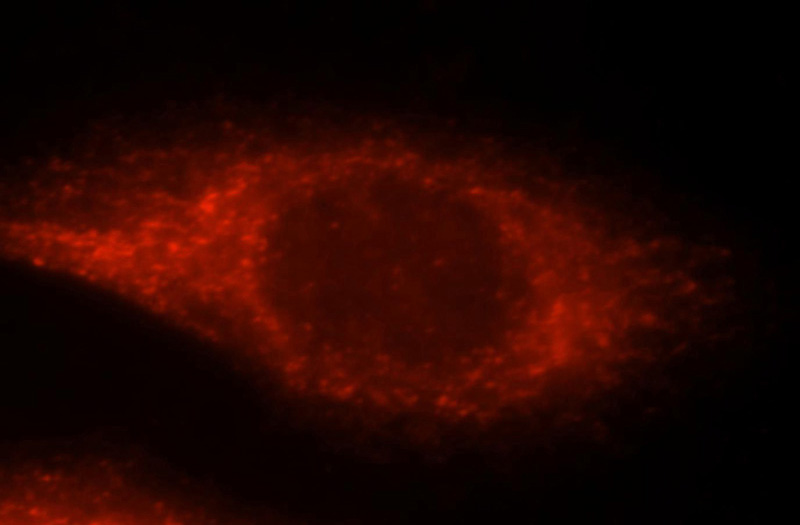-
Product Name
XIAP antibody
- Documents
-
Description
XIAP Rabbit Polyclonal antibody. Positive WB detected in HepG2 cells, C6 cells, COLO 320 cells, Jurkat cells. Positive IF detected in MCF-7 cells. Positive IHC detected in human pancreas cancer tissue. Observed molecular weight by Western-blot: 45-57 kDa
-
Tested applications
ELISA, WB, IHC, IF
-
Species reactivity
Human, Rat; other species not tested.
-
Alternative names
API3 antibody; BIRC4 antibody; hIAP 3 antibody; hIAP3 antibody; hILP antibody; IAP 3 antibody; IAP like protein antibody; IAP3 antibody; ILP antibody; ILP1 antibody; MIHA antibody; X linked IAP antibody; XIAP antibody; XLP2 antibody
-
Isotype
Rabbit IgG
-
Preparation
This antibody was obtained by immunization of XIAP recombinant protein (Accession Number: NM_001204401). Purification method: Protein A purified.
-
Clonality
Polyclonal
-
Formulation
PBS with 0.1% sodium azide and 50% glycerol pH 7.3.
-
Storage instructions
Store at -20℃. DO NOT ALIQUOT
-
Applications
Recommended Dilution:
WB: 1:500-1:5000
IHC: 1:20-1:200
IF: 1:10-1:100
-
Validations

HepG2 cells were subjected to SDS PAGE followed by western blot with Catalog No:116986(XIAP antibody) at dilution of 1:1000

Immunohistochemical of paraffin-embedded human pancreas cancer using Catalog No:116986(XIAP antibody) at dilution of 1:200 (under 40x lens)

Immunofluorescent analysis of MCF-7 cells, using XIAP antibody Catalog No: at 1:25 dilution and Rhodamine-labeled goat anti-rabbit IgG (red).
-
Background
XIAP, also named as API3, BIRC4 and IAP3, belongs to the IAP family. It has E3 ubiquitin-protein ligase activity. It mediates the proteasomal degradation of target proteins, such as caspase-3, SMAC or AIFM1. XIAP is an inhibitor of caspase-3, -7 and -9. It mediates activation of MAP3K7/TAK1, leading to the activation of NF-kappa-B. XIAP is an apoptotic suppressor. It is ubiquitinated and degraded by the proteasome in apoptotic cells. The MW of XIAP is 45-56 kDa.
-
References
- Yin W, Chen N, Zhang Y. Survivin nuclear labeling index: a superior biomarker in superficial urothelial carcinoma of human urinary bladder. Modern pathology : an official journal of the United States and Canadian Academy of Pathology, Inc. 19(11):1487-97. 2006.
- Liao Y, Zeng H, Wang X. Expression patterns and prognostic significance of inhibitor of apoptosis proteins in adenoid cystic carcinoma and pleomorphic adenoma of lachrymal gland. Experimental eye research. 88(1):4-11. 2009.
- Liu X, Chen N, Wang X. Apoptosis and proliferation markers in diffusely infiltrating astrocytomas: profiling of 17 molecules. Journal of neuropathology and experimental neurology. 65(9):905-13. 2006.
- Chen N, Gong J, Chen X. Caspases and inhibitor of apoptosis proteins in cutaneous and mucosal melanoma: expression profile and clinicopathologic significance. Human pathology. 40(7):950-6. 2009.
- Liu GH, Wang C, Ding ZY. Overexpression of the truncated form of Livin reveals a complex interaction with caspase-3. International journal of oncology. 42(6):2037-45. 2013.
- Liu Q, Fu H, Xing R. Survivin knockdown combined with apoptin overexpression inhibits cell growth significantly. Cancer biology & therapy. 7(7):1053-60. 2008.
- Su J, Zhao P, Kong L. Trichothecin induces cell death in NF-κB constitutively activated human cancer cells via inhibition of IKKβ phosphorylation. PloS one. 8(8):e71333. 2013.
- Wu P, Zhu X, Jin W, Hao S, Liu Q, Zhang L. Oxaliplatin triggers necrosis as well as apoptosis in gastric cancer SGC-7901 cells. Biochemical and biophysical research communications. 460(2):183-90. 2015.
Related Products / Services
Please note: All products are "FOR RESEARCH USE ONLY AND ARE NOT INTENDED FOR DIAGNOSTIC OR THERAPEUTIC USE"
